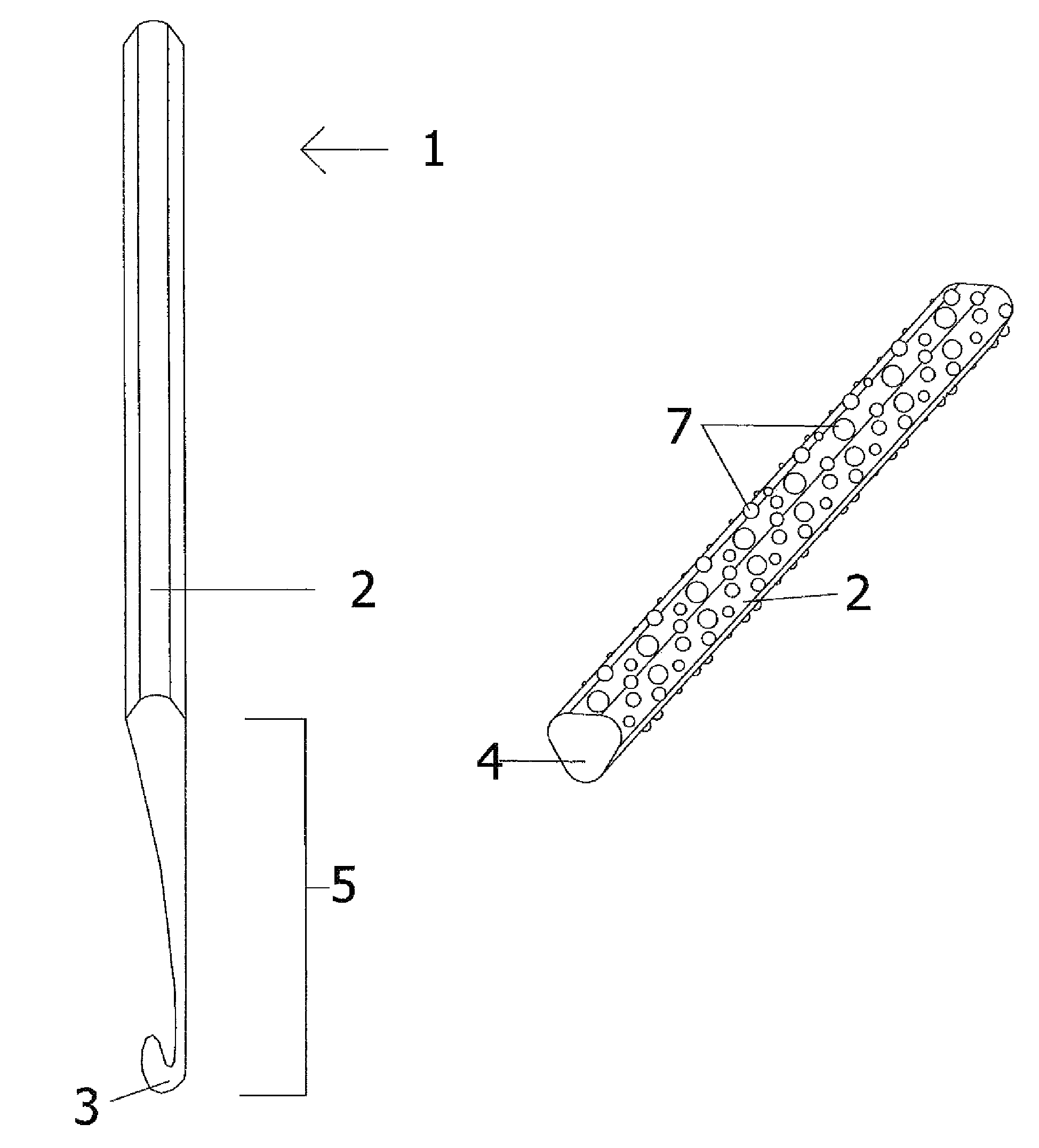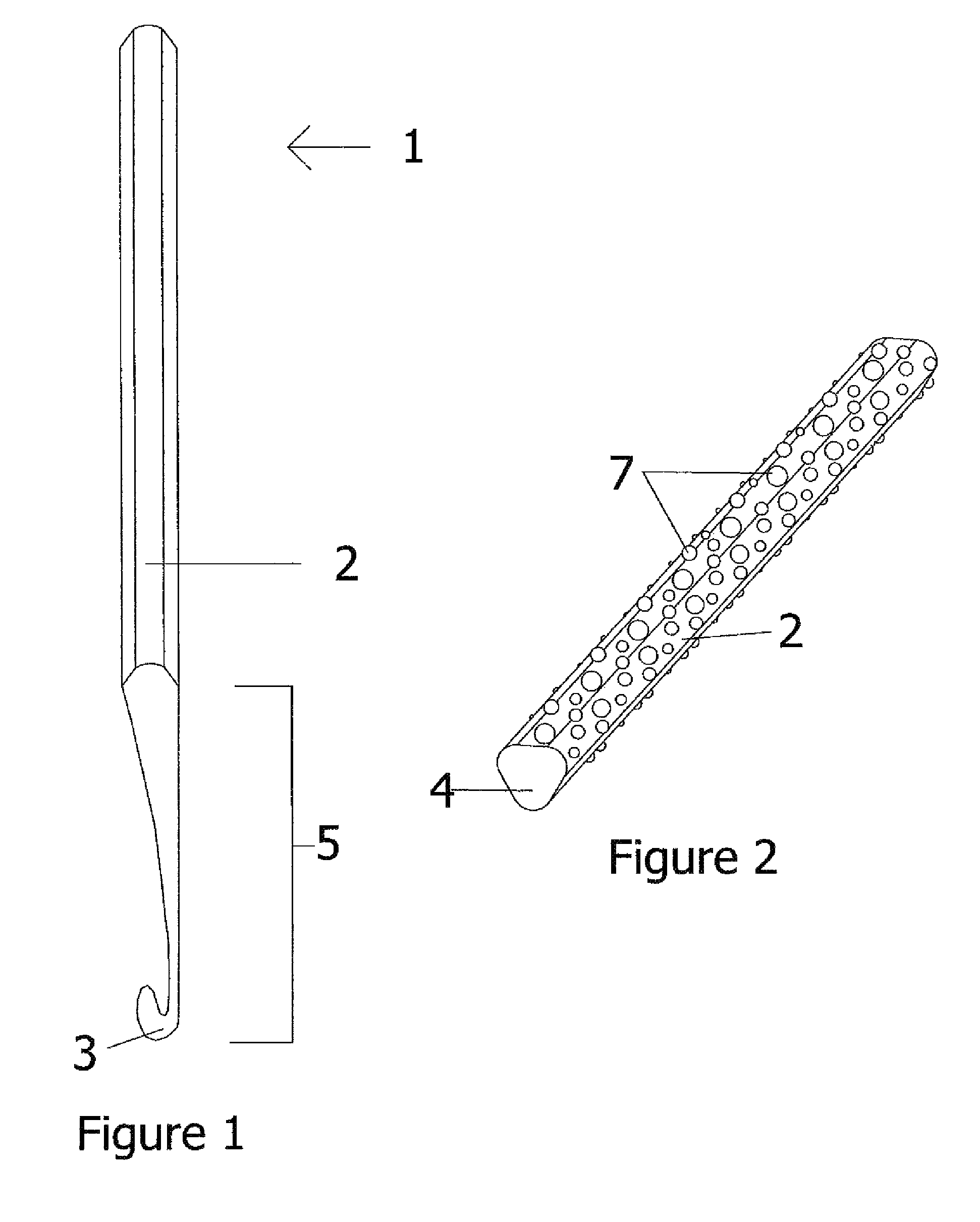Furthermore, people who enjoy crocheting will often continue it throughout their lifetime, even when
arthritis and various
joint problems experienced as they age make it more difficult to perform.
A current and common complaint among people crocheting is that their hands and fingers frequently become tired and ache as a result of their crocheting activity, and the numbing condition of decreased circulation commonly referred to as the
sensation of “pins and needles” also frequently occurs.
However, most people crocheting enjoy the creative process enough that they are unwilling to stop crocheting even if temporary discomfort exists.
However, it is the same precise and consistent repetitive crocheting movement that admirably produces even tension and a uniform look in a finished crocheted piece (something that most people crocheting try to achieve) that causes (or at least contributes to) the tired, achy, and numbing of fingers and hands characteristic of many people devoted to crocheting.
Also contributing to this problem, is the fact that during crocheting activity, the portion of the crocheted product located between the person's hands and lap is always hanging from the hook (usually growing steadily in size and weight), and it is suspended solely from the person's hands and fingers.
As one can imagine, as it grows in size a large work-in-progress, such as but not limited to the front or back of an adult sweater or coat, a shawl or a poncho, or an afghan, will become quite heavy for the person's fingers to support, and will also eventually provide an adverse affect on the person's hands, arms, shoulders, and back if crocheting activity extends over a long period of time or is conducted repeatedly on successive days, particularly when heavier weight yarns are involved.
Thus, by their devotion to crocheting activity over a period of years, a person crocheting can also risk
repetitive motion injury such as
carpal tunnel injury, arthritic pain, and / or permanent finger
deformity.
However, providing proper tension also requires greater pressure of the hands and fingers of the person crocheting against a crochet hook shaft, and contributes to the person's continued discomfort and eventual injury.
However, it also has the
disadvantage of restricting hand and
finger movement relative to the shaft, which due to the repetitive nature of crocheting activity can lead to premature hand and finger discomfort and injury.
Also contributing to this discomfort and injury is the fact that a work-in-progress steadily becomes heavier as crocheting activity continues.
Since crocheting activity as it is known today has been conducted for such a long time, and there are so many printed and published patterns available that a person crocheting would want to try in a new color or repeat in a different size, changing the fundamentals of the crocheting process appears to be a monumental task that would take a significant amount of time to bring into the mainstream.
Therefore, this approach was not considered a viable alternative, since it would provide no immediate relief to people currently crocheting who are set in their ways.
However, the addition of padding or gloves to a person's fingers or hands while crocheting might make the fingers less flexible and lessen crocheting speed.
Furthermore, the use of padding or gloves might not allow the
yarn /
fiber / strand applied by an
index finger to slip easily over it and could have an adverse
impact on tension.
Therefore it was concluded that even if padding or gloves were made available, most people crocheting would prefer to work without it, seeing the disadvantages outweighing the benefits.
In addition, the change cannot involve the use of soft and / or resilient materials on the hook or close to it, as the uniformity of loops would be more difficult to control, the tension and gauge of a finished product could be adversely affected, the speed of crocheting would most likely be reduced, and / or the ease of loop movement over the hook would be diminished.
However, the illustration on the Shosuke cover sheet shows the
rubber material positioned over most of the flattened grip area configured for engagement with the user's
thumb, forcing the user's fingers back away from the hook a significant distance that would make it difficult for the person to introduce new strands (and create new loops therewith) without repositioning at least some of the user's fingers into direct contact with the smooth exterior surface closer to the hook, which at least in part would defeat the purpose behind providing the
rubber material for “improved comfort and workability”, as stated.
However, the Okada inventions ('347 and '783) do not have the
checkerboard markings extending across the flattened
thumb grip area, and as a result provide no ergonomic
advantage toward relieving the pressure exerted by the flattened
thumb grip area against fingers and hand by the crochet hook shaft, which instead of providing ergonomic relief to a user, advantageously fixes the user's hand and fingers in an appropriate orientation relative to the hook for crocheting activity, while at the same time adversely maintaining the crochet hook shaft in a substantially
fixed position relative to the hand, providing a result opposite to the present invention, which conversely to the Okada inventions encourages opportunities to provide a variety of movement for a user's fingers and hands relative to its crochet hook shaft and thereby provide ergonomic benefit thereto.
Furthermore, since crocheting activity involves repeated back-and-forth rotation of the hook, a first rotation of the hook that allows easier
insertion into a prior loop and then a second reverse rotation of similar amplitude for snag-free withdrawal of a strand through the prior loop to form a new loop, the flattened thumb grip area on the Okada inventions would cause fixed positioning of a user's fingers against it during new loop creation, and result in premature hand and finger fatigue, whereas the substitution of elevation changes for the flattened thumb grip area, as in the present invention, gives its users the opportunity to occasionally rotate the crochet hook shaft relative to their fingers during new loop creation, thereby bringing differing elevational structure /
topography in contact with the
skin on the user's fingers and hands, and pressure relief to areas previously experiencing decreased
blood circulation, allowing the user to crochet longer, in greater comfort, and with less risk of sustained injury to the fingers and hands.
Thus, the
checkerboard pattern provided in the Okada inventions in the positions shown cannot provide the same ergonomic benefit experienced during present invention use, since in combination with the flattened thumb grip area it inherently works to
restrict the user's finger and hand positioning relative to the crochet hook shaft, which promotes (and does not lessen) the risk of injury to a user's hands and fingers.
Furthermore, the close spacing and uniformity of the
checkerboard line spacing shown in the two Okada inventions would not be likely to provide much ergonomic relief to a person crocheting, as when they would re-grasp an Okada crochet hook shaft, the contact points between the person's hand and the shaft would more often than not be very close to that used prior to crochet hook release, providing little or no long term circulatory relief.
 Login to View More
Login to View More  Login to View More
Login to View More 


